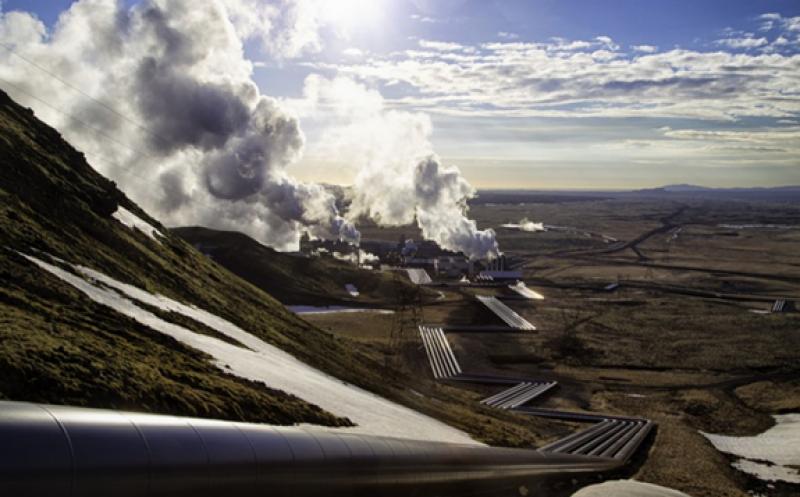A geothermal power station in Iceland | Photo: Getty ImagesThe Fort Nelson and Saulteau First Nations are hoping to develop a $100 million geothermal power plant in B.C., but the project could be in jeopardy if it doesn’t receive provincial funding soon.

The two First Nations have $40 million in grant funding commitments to help them develop a geothermal power plant in the Fort Nelson area.
But Fort Nelson First Nation Chief Sharleen Gale says the clock is ticking. The project needs confirmation of $6.3 million in funding from the B.C. government by the end of December, or the grant donors could walk away and put their money elsewhere.
The B.C. government has committted $430,000 in funding towards the project, but Gale said the First Nations need $6.3 million from the government to get it through the final financing and sanctioning stage.
“We have asked the province for $6.3 million to make the project work,” Gale said.
“We got $40 million from a grant funder and we have our obligations to get to a certain stage. And if we don’t have the $6.3 million by December 31, then we’re going to have to say ‘goodbye’ to the project and that money will be invested into another project in Canada.”
Gale said she could not say who would provide the $40 million grant, due to a non-disclosure agreement.
The project, which would be wholly owned by the two First Nations, would tap the hot water from the depleted Clarke Lake natural gas reservoir.
The Clarke Lake geothermal generation plant would produce seven megawatts(MW) of electricity in its initial phase –enough electricity to power about 5,000 homes. The project could be expanded to 15 MW.
As a renewable energy source, geothermal power has one big advantage over wind and solar: It isn’t intermittent. Hot water drawn from deep, hot aquifers can produce steam to drive turbines around the clock.
The problem in developing it in B.C. has been the cost of exploration and development. Developers can spends millions drilling test wells, only to discover the conditions are not right for generating geothermal power.
Geothermal plants are also generally more expensive to build than wind or solar, although the power generated is more valuable, since it is firm and reliable. (Because wind and solar often produce power when it’s not needed, it sometimes has to be sold at a steep discount, making it less valuable than firm, dispatchable power.)
The Clarke Lake gas reservoir is B.C.’s oldest natural gas producing area, so its geology is well known. That eliminates a lot of the exploratory work that would otherwise need to be done. Also, a pre-feasibility study of the basin’s geothermal potential was produced last year by Geoscience BC.
“The great thing about the Clarke Lake field, for over 60 years it has been the most abundant and oldest gas field in British Columbia,” said John Ebell, director with the Barkley Project Group, the renewable energy project management company involved in the project.
“There are over 140 gas wells that have been drilled into that reservoir already, and from that there is a huge amount of data. The resource is quite well-known.
“We know the geology, we know the rock type, and how much geothermal fluid is available in that reservoir. Those things are all well identified. So we start this project as a fully explored project. So we are now in an engineering phase of this project.”
The aquifer that would be tapped is 2,000 to 2,500 metres down and the water is about 120 degrees Celsius. That’s not hot enough in itself to produce the steam needed to drive turbines, so the project will use a binary generator that uses a secondary fluid with a lower boiling point to produce heat and steam.
The Fort Nelson and Saulteau First Nations will be getting help on the project from the First Nations Major Projects Coalition, which helps First Nations involved in major projects with financial and technical expertise.
The project is already permitted and the First Nations are working on raising the additional capital needed to build it. Should the government come through with the $6.3 million in funding, the First Nations hope to have the rest of commercial financing in place by 2022, with construction to start soon thereafter.
“This plant will be operating by the end of 2024,” Ebell said.
This article is reproduced at electricenergyonline.com